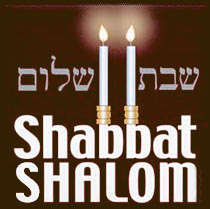Metzora
The second Torah reading this week is Parshat Metzora. The parshah starts off where we left off in Tazria, where the Lashon Hara (Slander) immediately caused the final stage of Tzarat (Berachot 5). The leper, who spoke Lashon Hara, in punishment was sectioned off from society and had to declare himself ‘Impure’ when someone came near him, showing to everyone how bad the sin of Lashon Hara is! They say the Leprosy came in its worst form in punishment for Lashon Hara; this is because the person speaking it is seen as denying the almighty and transgresses the entire Torah. Hashem says, ‘I and he cannot coexist in the World! (Sota 5a)’ Also this transgression causes harm to all concerned, the speaker, the listener and the victim.
There were four people in the Tanach who were confined to Gehinnom on account of their malicious tongues; the prophet Bilam surpassed everyone else in speaking evil (in parshat Balak/ Sota 9b)); Doeg (featured in book of Samuel (Sota 9b)), Gechazi (a servant of the prophet Elisha (Melachim II 5)) and Achitofel (Sota 9b).
The sages teach that one of the best antidotes to speaking Lashon Hara is learning Torah!
The sages furthermore say that Lashon Hara caused many tragedies; in Parashat Bereishit we learn how the serpent slandered the creator to Chava (Sota 9b); we learn in Parshat Vayeishev that all the troubles which befell Yosef resulted from his having spoken Lashon Hara about his brothers, this also led to their selling him, and ultimately caused the Egyptian exile (Bereishit Rabba 37:2); in Parshat Shelach we learned how the Lashon Hara which the 10 spies related about the land of Israel caused the death decree of the men aged 20 – 60 in the wilderness (Taanit 26); Also the slander of Doeg, King Shaul's chief and the head of the Sanhedrin, caused the murders of nearly an entire city of Kohanim (Shmuel I 22:9).
In the book of Mishlai (Proverbs), King Solomon states ‘Death and Life are in the hands of the tongue. (Mishlei 18:21)’ A person must know that the tongue is a most potent weapon, more powerful than a sword. A sword can kill only nearby, whereas Lashon Hara spoken can hit the heart of someone far away, similar to a missile.
The parshah then relates how to purify a leper who has been declared impure, where the Kohen assembles 4 items which had to be immersed in mixture of water and blood; a stick of cedar wood, a hyssop twig, wool dyed crimson red and a living bird (Vayikra 14:4). The leper then has to bring a guilt offering sacrifice (a lamb), a sin offering (a female lamb), an elevation offering (a lamb). The Metzora may go through several purification periods, each time finding a new mark of tzaraat just before he is able to bring his offerings (Keritot 9b).
The parshah then relates how Tzarat appeared on houses, in the form of dark red or green spots on the wall (Vayikra 14:33/57 - Eruvin 4 - Succah 5/6) ). Then the parshah takes a tangent and discusses the conditions rendering a persons body impure, as a result of certain physical conditions (Vayikra 15:3).
Finally the reading relates the ‘Nidda’ laws, a woman becoming Nidda through menstruation, childbirth or uterine bleeding (Vayikra 15:19), concluding by relating the purification process of an individual who is impure by immersing in a Mikveh.
The Haftorah for Metzora comes from Chapter 7 in the book of Kings.

 Share on Twitter
Share on Twitter Visit our Facebook page
Visit our Facebook page